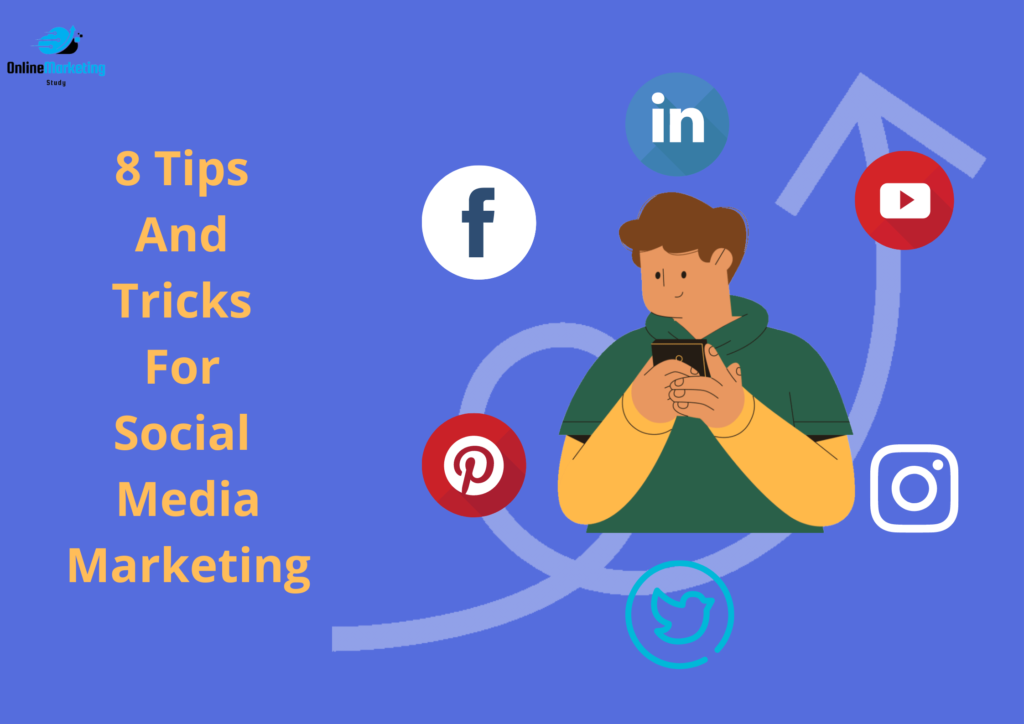Social Media Marketing: What Is It?
Social media marketing is, in essence, online advertising on sites like Twitter, Facebook, Instagram, Pinterest, LinkedIn, etc. Using social media marketing strategically may be a great way to build your brand awareness, expand your network, and attract customers.
The Benefits Of Social Media Marketing
Social media is widely used. Every demography uses these open networks around the world for communication, informational purposes, and entertainment. Advertisers can also target certain users on social media based on a range of criteria, such as their geography, interests, level of education, and purchasing habits.
- Facebook is by far the most widely utilised platform, both in terms of active users and usage frequency. One can inform customers about local news, forthcoming events, blog posts, and exclusive offers. It’s a fantastic approach to keep the customers informed and engaged!
- Twitter is a useful tool for sharing brief updates. Because there is a 240 character limit, information must be brief. Sharing links to the website and images of properties dominates the Twitter feed.
- Pinterest: An image-based social media platform is called Pinterest. It addresses a primarily female audience and is a terrific venue for sharing design and décor inspiration.
- Instagram: Instagram is a photo-sharing website that primarily targets mobile users. Through the use of unique imagery, Instagram is an efficient tool to promote new content, services, listings, and neighbourhood events.
- YouTube can be utilised for the distribution of original content, such as audience-relevant, high-quality videos. The produced views may have an impact on website traffic and aid in generating purchases.
8 Tips And Tricks For Social Media Marketing
- Choose your audience:
Understand the demographics; who are your main sources of revenue? Consider which social media would be most relevant to those people. It can be advisable to use Twitter or Instagram for advertising if your customers are typically young.
Recently, Facebook has tended to attract older users. Pinterest might be the best channel if the intended audience is female or design-focused.
- Prepare the content:
Make sure the information you share is worthwhile and engaging before posting. Your account will lose followers if you make irrelevant “spam” posts or use overtly promotional language.
- Share website content with others:
When posted on social media, blog entries, images, and videos can get many more views. To generate more traffic, use direct connections.
- Consistency in brand messaging and images is important:
All spheres, including social media, must uphold the aesthetic. Every piece of content posted benefits from having the logo on it.
- Use a variety of social networking platforms, then connect them:
You’ll ultimately get more views on your films if you link them to your Facebook account. A Facebook post’s Twitter handle can get more followers. Combining several marketing tactics is a successful technique as well. Print ads should feature your social media assets.
- Determine success:
You can view your click-through rate using tools like Google Analytics. This will reveal which marketing strategies are most effective. Based on these insights, you can adjust your social media strategy.
- Monitor competitors:
Check out how other businesses in the sector are utilising social media marketing. This can serve as an inspiration but also protects you from unintentionally copying a competitor’s campaign.
- Link to external articles:
Not all content shared must be specifically about the business. By referencing other publications, you can gain credibility and attention from readers who might not be your present customers but might be in the future. Make sure the links go to intriguing content for your viewers. Even some links in return are possible.
Paid Social Media Marketing: Is It Worthwhile?
In our experience, purchasing advertisements on websites like Facebook may be a really economical way to advertise. Using paid social media marketing enables you to choose a more precise audience. We are able to select the general age, class, and area that the advertisement should be distributed to.
Every time, we start by deciding on a campaign goal. Is increasing sales the objective? Entice visitors to a website? Amplify the visibility of an event? The ad won’t be useless if it has a clear objective.
Ad copy should be easy to read, straightforward, and concise like other forms of advertising. The time you have to pique a user’s interest is limited. They will simply scroll past an advertisement if it is complicated or unclear.
In Conclusion
Marketing on social media is getting more and more significant. One can use several social media platforms and have a particular audience in mind. The objective is to make content available to people who will benefit from it. Every person who accesses the content has the potential to be a buyer, a seller, or a recommender.

